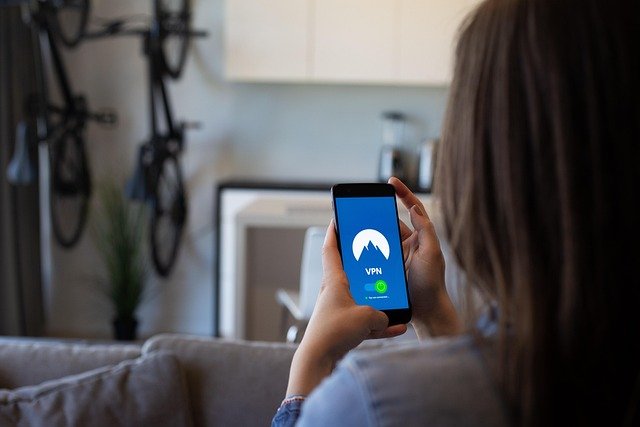Secure network practices for protecting work data from home
Remote work benefits from secure network habits and a thoughtfully arranged workspace. This article explains practical network practices, device handling routines, and workspace choices that reduce accidental exposure and protect work data while supporting productivity, wellbeing, and efficient daily habits.

Remote work combines technical controls and everyday habits to protect work data. Effective protection starts with secure network settings and extends to routines, device management, and workspace layout that minimize accidental exposure. The guidance below describes concrete steps—router hardening, network segmentation, VPN use, multi-factor authentication, encrypted backups—paired with ergonomics, organization, lighting, and wellbeing considerations so security fits into daily workflows rather than being an extra task.
Ergonomics and layout
Place your desk and monitor so screens are not visible from doorways or common paths; positioning screens away from windows or high-traffic sightlines reduces the risk of shoulder-surfing. Consider privacy filters for laptops used in shared spaces and arrange seating so guests don’t face screens. Good layout also supports cable management that keeps network hardware and external drives secure and less likely to be tampered with. A dedicated work zone helps separate personal and work devices and makes it easier to enforce security routines like locking screens and storing backups when finished for the day.
Small physical changes can have outsized security benefits. Adjust monitor height so you can glance away without exposing sensitive content; use a small filing cabinet or lockable drawer for printed documents and removable storage. These ergonomic choices support longer sessions without fatigue while making it simpler to maintain security-minded organization.
Productivity and routines
Establish daily and weekly routines that include security checks: verify pending software updates are applied, confirm backups completed, and ensure your VPN connects before accessing sensitive systems. Use a password manager to generate and store unique credentials, and enable multi-factor authentication (MFA) on all critical accounts. Schedule periodic audits of connected devices and revoke access for outdated or unused hardware. Consistent routines reduce friction and minimize the chance of missed protections that can lead to data exposure.
Routines that reduce interruptions also boost productivity. Set blocks of focused work time with short breaks to check messages, and integrate security tasks—like changing passwords or checking device inventories—into a monthly checklist so they are performed habitually rather than reactively.
Lighting and acoustics
Control lighting to reduce screen glare and prevent on-screen content from being visible from outside the room. Use blinds, curtains, or directional lamps to manage brightness; indirect lighting lowers eye strain and makes it less likely you’ll increase display brightness to a level that reveals sensitive content. Proper lighting supports accuracy and reduces errors when handling confidential information.
Acoustics matter when sensitive conversations occur. Position your workspace away from high-traffic zones, use soft furnishings or acoustic panels to dampen sound, and consider white-noise machines or microphone muting practices during breaks. These measures protect verbal information while improving concentration and overall wellbeing.
Organization and furniture
Adopt clear organization habits and choose furniture that supports security. Use lockable storage for printed records and external drives, label storage clearly, and keep encryption keys or hardware tokens stored separately from devices they secure. A dedicated shelf for charging devices and a small safe for backups or encryption keys reduces the risk of loss or unauthorized access during visits from guests or maintenance personnel.
Furniture that helps maintain order also supports mental clarity. A clutter-free desk reduces accidental exposure of documents and makes it easier to follow security routines like locking devices before walking away. Consider a cable organizer to keep networking hardware tidy and less accessible to casual tampering.
Connectivity and security
Network setup is central to protecting data. Use a modern router with up-to-date firmware, enable WPA3 if available or the strongest WPA2 configuration otherwise, and set a long, unique admin password. Create separate SSIDs for work devices and for guest or IoT devices to limit lateral access. Enable the router firewall, disable remote administration when not required, and log into the router periodically to review connected devices.
Use a reputable VPN for remote access to corporate resources, and enable DNS filtering or endpoint protection to block malicious sites. Keep operating systems, browsers, and key applications patched automatically where possible. Regularly encrypt backups and store copies off-site or in an encrypted cloud container. Multi-factor authentication should be enabled for email, file sharing, and administrative accounts to mitigate credential theft.
Decoration and wellbeing
Thoughtful decoration can subtly enhance security while supporting comfort. Position plants, shelving, or art to block direct sightlines to screens from entrances, and choose calming colors and textures that reduce stress and support focused work. A well-considered environment lowers the likelihood of mistakes that expose data and encourages adherence to security habits.
Prioritize wellbeing by maintaining healthy routines: adequate breaks, proper lighting to reduce eye strain, and ergonomically appropriate furniture. Reducing stress and fatigue helps you adhere to security practices—locking screens, verifying secure connections, and following storage routines—making data protection an integrated part of daily work rather than an afterthought.
Secure network practices for home work require a combination of technical measures and consistent behavioral habits. By hardening connectivity, segmenting networks, using VPNs and MFA, and pairing these with intentional workspace layout, lighting, organization, and routines, you reduce the risk of accidental exposure and create an environment where protecting work data becomes second nature.





